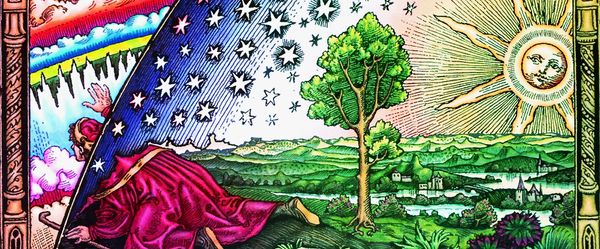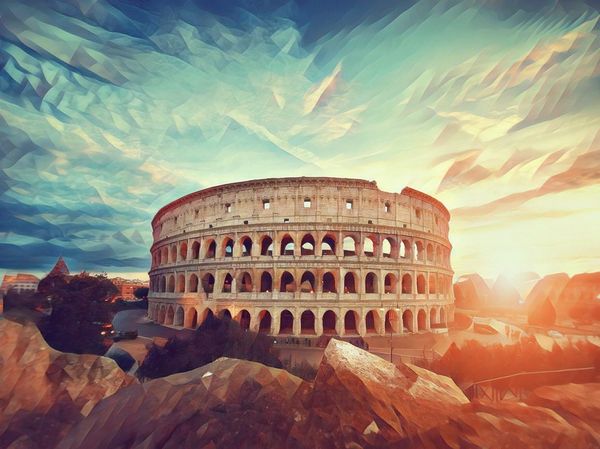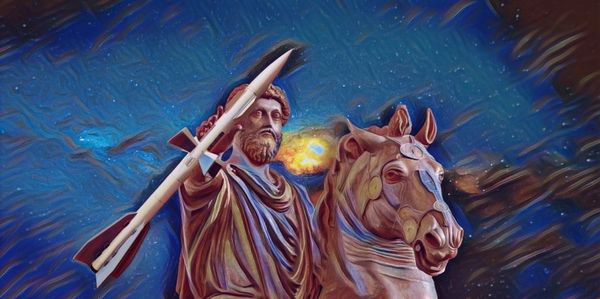Steve Taylor • • 39 min read
Who Created God? – The Secret History of “Spirit-Force”
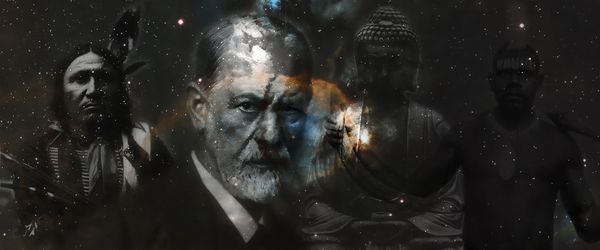
This essay examines the question of why human beings have always had such a strong need to believe that gods are overlooking and protecting them. I discuss the characteristics of ‘indigenous spirituality’ and the historical origins of theism and link this to the development of a stronger ‘ego structure’ amongst certain human groups. Monotheism (and theism itself) is seen as an inevitable consequence of the painful sense of separation and incompleteness which strongly egoic consciousness brings.
Until recently, the existence of God, or gods, was taken for granted by almost everyone. ‘He’ was—or they were, if we’re speaking of polytheistic religions—a powerful psychological reality to most of the world’s population. Wherever human beings have lived, gods seem to have naturally sprung from their psyche.
In my opinion, the amazing prevalence of this belief has never been explained satisfactorily. Many of the explanations for God and religion tend towards an ‘intellectualist’ or a ‘consolationist’ approach. The ‘intellectualist’ approach suggests that human beings invented gods and the religions associated with them to explain the world. On the one hand, religion explains strange natural phenomena. When the sun moves across the sky, when the thunder roars, when crops die, or when a person dies for no apparent reason—all of this can be explained in terms of the actions of gods or spirits. Religions can also explain how the world came into being (God created it) and why life is full of evil and suffering (it’s because of the Devil, or else it’s a test God has set us, and He will punish or reward us when we die) (Boyer, 2002)
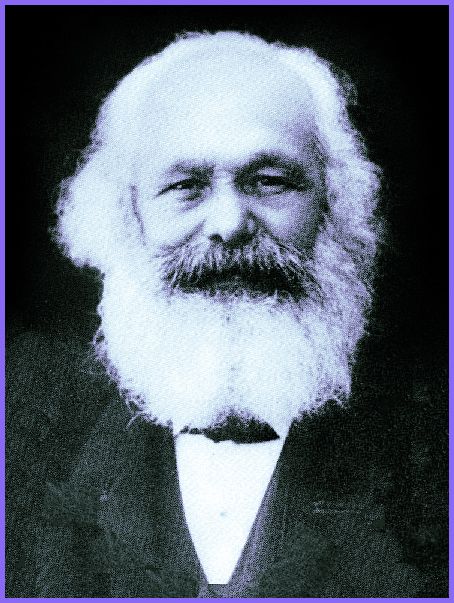
Generally, the ‘consolationist’ approach maintains that religion consoles human beings against our mortality and the sheer hardship and suffering which fills our lives (Boyer, 2002). Both Marx and Freud, for example, were proponents of the ‘consolationist’ view. To Marx, religion was the ‘universal ground for consolation’ or, in his famous phrase, the ‘opium of the people’ (Hamilton, 1995). The working class required this consolation because of the alienation which the capitalist system produces, and the sheer misery and oppression they were forced to endure.
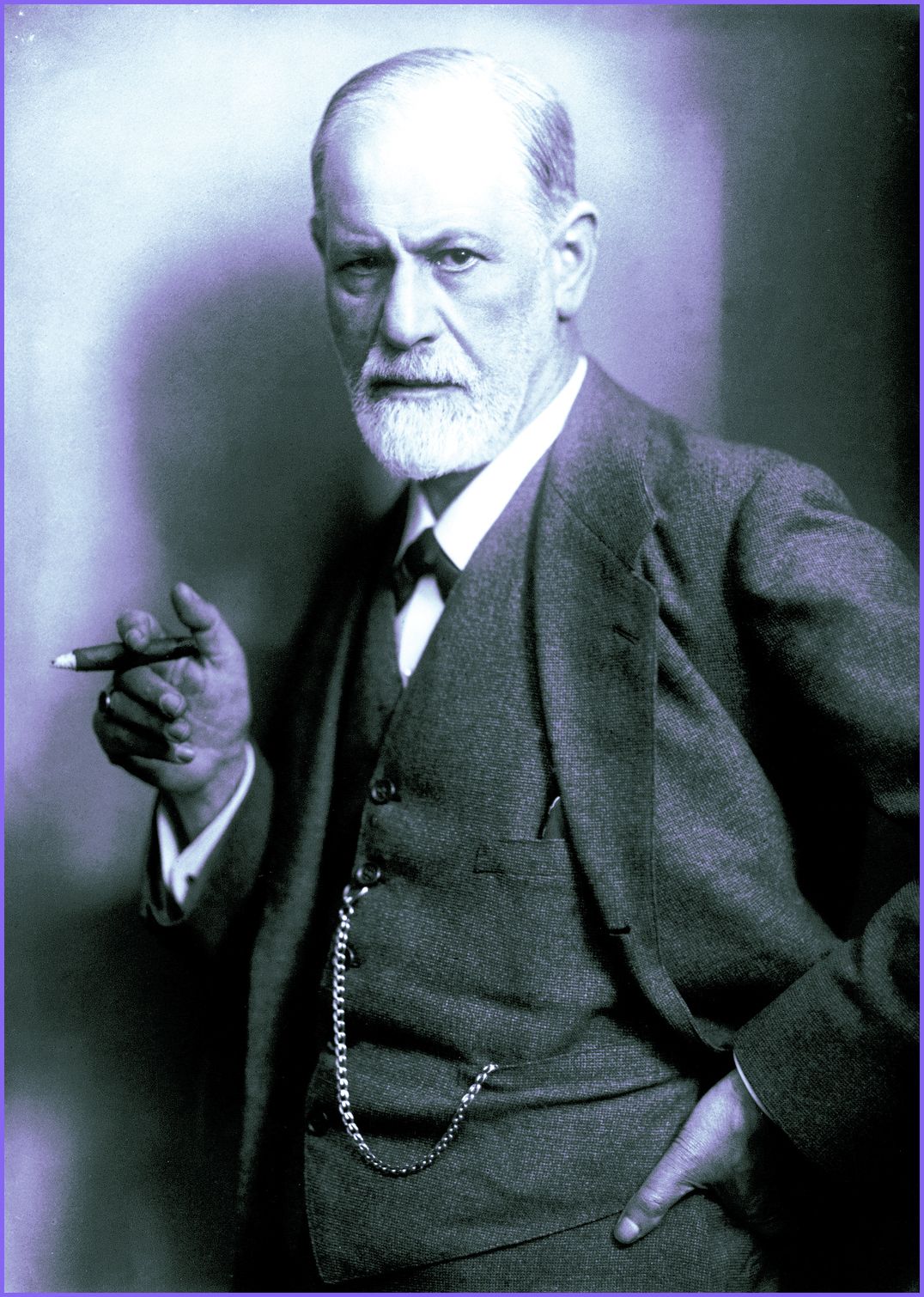
For Freud, belief in God was a neurotic regression to childhood, with God representing an omnipotent father figure. But at the same time Freud believed that religion had a consoling function in that it helped to make some sense of an arbitrary and meaningless world and also compensated human beings for the ‘privations’ which civilisation causes. Being ‘civilised’ means repressing our instincts and impulses, which brings frustration, and results in us inflicting suffering on each other. And as Freud writes, religion’s task is ‘to even out the defects and evils of civilisation, to attend to the sufferings which men inflict on one another in their life together’ (in Hamilton, 1995, p. 58).
On the other hand, from the perspective of transpersonal psychology, we might take the Jungian view that God is not exactly a physically real being—as Christians or Muslims believe—but is nevertheless psychically real. For Jung (e.g. 1969) the collective world of archetypes is as a real as the physical world, and God is one of the most powerful archetypes—hence the omnipresence of belief.
Read this: Carl Jung and the Artistic Impulse: Madness in the Creative Spirit
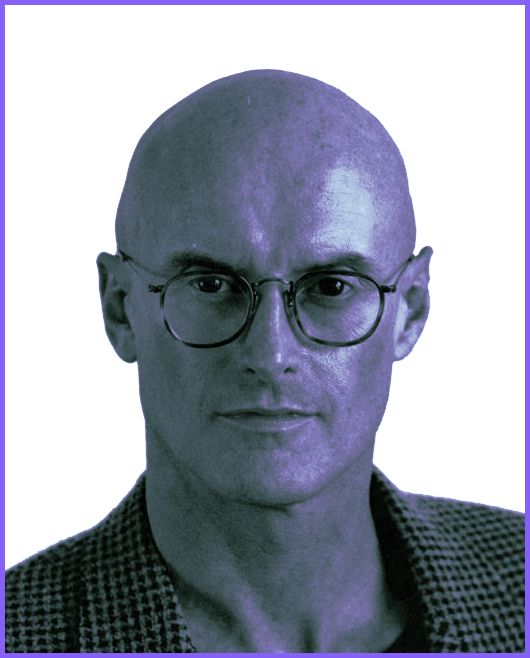
Ken Wilber takes a slightly different approach, suggesting that the concept of the monotheistic God is an intuition of Spirit, conditioned and filtered through the archetypal realms. According to him (Wilber, 1981), monotheism is an evolutionary step forward from the ‘magical’ religion and polytheism of ‘primitive’ cultures. Until around 2500 B.C.E., he argues, the mean level of human consciousness was pre-egoic, and even during the ‘high membership period’ (from 4500 to 1500 B.C.E.) the highest level of consciousness which gifted individuals like shamans could access was the psychic or Nirmanakaya realm. But beginning at around 2500 B.C.E., the human race (or at least some human groups) began to evolve to the egoic level—and since their average level of consciousness was higher, gifted individuals could ‘jump’ to a greater height and reach the subtle level. Particularly when what he calls the ‘incipient egoic-rational’ phase began at around 500 B.C.E., more and more human beings began to access the subtle levels, and the development of monotheism was the result. Wilber’s view suggests that the ‘God concept’ was so widespread simply because some human groups evolved to a point where the subtle levels—even if they were not their normal state of consciousness—became more accessible. At the subtle levels, and within the cultural context of the pre-scientific world, God was a reality.
Primal Religion
One of the surprising things which cultural anthropology teaches us, however, is that not all human groups have concepts of gods. Indigenous tribal peoples like the Native Americans, the Australian aborigines and traditional pre-colonial Africans, were generally not, and are generally not (although the picture changed somewhat after they were exposed to Christian culture), theistic.
For peoples such as these, there are no deities who preside over certain localities or certain aspects of life. In fact, to them the concept of ‘God’ or ‘gods’ has no, or very limited, significance.1 It’s true that some indigenous peoples have a concept of a creator God, but these are usually very remote and detached figures. They seem to have been developed purely as a way of explaining how the world came into being. After creating the world, this ‘God’ steps aside and has very little influence. As Eliade (1967) noted:
Like many celestial Supreme Beings of ‘primitive’ peoples, the High Gods of a great number of African ethnic groups are regarded as creators, all powerful and benevolent and so forth; but they play a rather insignificant part in the religious life. Being either too distant or too good to need a real cult, they are involved only in cases of great crisis (p. 6).
The Azande, for example, have a concept of a supreme being called Mbori. However, according to the anthropologist Evans-Pritchard, there was only one rarely performed public ceremony associated with him, and individuals never prayed to him or even mentioned his name (Lerner, 2000). Similarly, the Fang people of Cameroon believe the natural world was created by a god called Mebeghe, and that the ‘cultural world’—of tools, houses, hunting, farming etc.—was created by another God called Nzame.
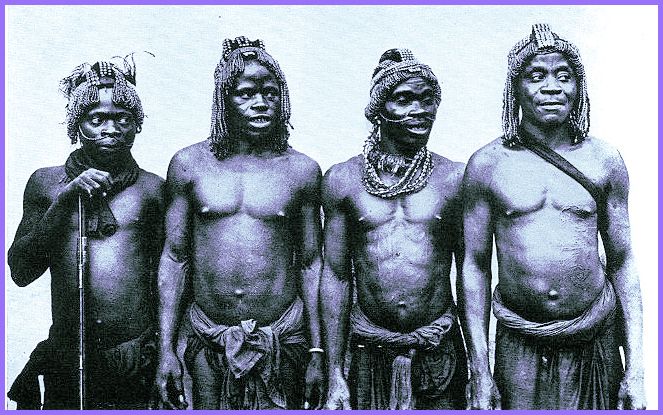
However, as Pascal Boyer (2002) notes, ‘these gods do not seem to matter that much. There are no cults or rituals specifically directed at Mebeghe or Nzame they are in fact rarely mentioned (p.160).’ According to Lenski’s statistics (1995), only 4% of hunter-gatherer societies and only 10% of simple horticultural societies have a concept of a ‘creator god concerned with the moral conduct of humans’ (p. 88).
There are two main elements of the spirituality of indigenous peoples, neither of which involve gods in the sense that we think of them. One of these is their awareness of an animating force which pervades the whole of the phenomenal world. All native peoples appear to have a term for this ‘spirit-force’. In America, the Hopi called it maasauu, the Lakota called it wakan-tanka, and the Pawnee called it tirawa, while the Ufaina (of the Amazon Rain Forest) call it fufaka (Heinberg, 1989; Hildebrand, 1988; Eliade, 1967). The Ainu of Japan called it ramut (translated by the anthropologist Monro [1962] as ‘spirit-energy’), while in parts of New Guinea it was called imunu (translated by early anthropologist J.H. Holmes as ‘universal soul’ [in Levy-Bruhl, 1965]). In Africa the Nuer call it kwothand the Mbuti call it pepo.
This force is not a personal being. It is not a deity which watches over the world and who human beings can appeal to for help and worship. It has no personality and no gender. Here a member of the Pawnee tribe describes their ‘supreme God’:
We do not think of Tirawa as a person. We think of Tirawa as [a power which is] in everything and moves upon the darkness, the night, and causes her to bring forth the dawn. It is the breath of the new-born dawn (in Eliade, p. 13).
There is some confusion because occasionally anthropologists translate these terms as ‘God’. Evans-Pritchard (1967) did this with the Nuer term for ‘spirit-force’, kwoth. At the same time, however, he was careful to point out that kwoth is not an anthropomorphic deity: ‘The anthropomorphic features of the Nuer conception of God are very weak and, as will be seen, they do not act towards him as if he were a man I have never heard the Nuer suggest that he has human form’ (p.7).
These concepts are strikingly similar to the universal spirit-force which spiritual and mystical traditions speak of – the brahman of Vedanta or the dharmakaya of Mahayana Buddhism, for example. It is striking that whereas for primal peoples the concept of ‘spirit-force’ seems to be a widely accepted—and commonly perceived—truth, for more ‘civilised’ Eurasian peoples it is an esoteric and mystical concept, which we associate with higher states of consciousness. To us, brahman is not the obvious, objective reality which it is to primal peoples. According to Vedanta, we normally see the world under the shadow of maya, which hides the truth of the oneness of the universe—and of our own oneness with it—from us. It is possible for us to become aware of this oneness, but only through a long period of following certain spiritual practices and lifestyle guidelines—such as meditation, the eight-limbed path of Yoga or the eightfold path of Buddhism—which have the effect of refining and intensifying our consciousness. This is indicative of the fundamental psychological difference between indigenous non-Eurasian peoples and ‘modern’ humans, which occurred as a result of the event which I have called ‘The Ego Explosion’ (Taylor, 2002, 2003, 2005). In fact, as we will see in a moment, the loss of awareness of this all-pervading spirit-force is one of the defining characteristics of theistic religion.
The second element of native religions is belief in spirits (in the plural). The world teems with spirits—both the spirits of dead human beings and ‘natural’ spirits which have always existed incorporeally. As E.B. Idowu writes of traditional African religion, ‘There is no area of the earth, no object or creature, which has not a spirit of its own or which cannot be inhabited by a spirit’ (1975, p.174). Like the Great Spirit itself, individual spirits are not anthropomorphic beings with personalities, like gods. They are not beings at all. As Idowu writes, ‘they are more often than not thought of as powers which are almost abstract, as shades or vapours’ (pp. 173–4). And spirits are involved in the world in a way that gods are not. Unlike gods, they are never separate from it, but always moving through it, or living within its rocks, trees and rivers.
Early religious scholars tended to believe that animism was the result of a mistaken generalisation. According to Comte, since they themselves were conscious beings, our early ancestors simply assumed—in the absence of any other evidence—that all things had an inner, subjective life too (Hamilton, 1995). Freud believed that spirits and demons were the ‘projection of primitive man’s emotional impulses’ (1938, p. 146), while more recently, Wilber (1995) has suggested that animism is the result of what he calls ‘pre-personal fusion’ with the world, the lack of a clear distinction between subject and object. However, these explanations contain the underlying ethnocentric assumption that spirits are an illusion, and that they cannot genuinely exist. The idea that spirits may be a genuine objective reality may seem absurd in a climate of post-modern rationality. But we should at least be open to the possibility, especially bearing in mind that Buddhist philosophy accepts the existence of entities invisible to the human eye (such as the peta-yoni, asura-yoni and devas), and suggests that we become sensitive to them as our consciousness becomes more refined through spiritual practice (e.g. Narada, 1997). Since we appear to have lost the ability to sense the presence of spirit-force around us, then it is at least possible that we have lost the ability to sense the presence of spirit entities around us too.
However, if we decide that spirits are illusory, it is possible to interpret them in ‘intellectualist’ terms. It’s not such a big step from sensing that all things are alive in a general way —because of the spirit-force which pervades them—to believing that all things are alive in the sense of being autonomous active forces. Spirit became individuated into spirits, and individual spirits were attributed with causative powers. When a wind suddenly arose, for example, this could be explained as the action of a wind-spirit, changes of seasons could be explained in terms of the actions of ‘the spirits of the four winds’ (as the Plains Indians believed), and illness and death could be explained as the influence of ‘evil’ spirits or sorcery (as most primal peoples believe). At any rate, whether they are objective realities or not, spirits do have this ‘intellectualist’ function to indigenous peoples.
August Comte and James Frazer also believed that theistic religion was a fairly late development. According to Comte, the earliest human beings were at the ‘fetichistic’ stage of development, which comes before the polytheistic and monotheistic stages (and later, the metaphysical and the positive stages) (Hamilton, 1995). While in Frazer’s terminology, early human beings were at the ‘magical’ stage, which comes before the religious and the scientific (Frazer, 1959). And the fact that contemporary native peoples do not have ‘theistic’ religions suggests that there is some truth to this view, if we can assume that these peoples are representative of an earlier phase of human culture.2 As Jacques Cauvin points out, the prehistoric artwork contains none of the images of deities which feature prominently later:
Though it is known that religious feeling has accompanied the human species of a long time, it is not easy to date the appearance of the first gods. Palaeolithic art already had a ‘religious’ content, but it seems not to have had reference to gods.
Theistic religions are particularly characteristic of the peoples of the Europe, the Middle East, and Asia. It seems that, before colonial contact from the 16th century onwards, the indigenous peoples of Australia, the Americas, and many other parts of the world did not have theistic religions. In Africa the situation is a little more complex, due to earlier European and Arabic influences, but even there theistic religions were a late development, and very rare until recent centuries.
Who Created God?
A controversial subject here is the ‘Goddess religion’ which, according to scholars such as Marija Gimbutas (1974) and Riane Eisler (1987, 1995) was spread throughout Europe and the Middle East during the Neolithic era, from 8000 BCE to around 3000 BCE (e.g. Gimbutas, 1974). However, there is actually very little evidence that, during the early part of this period at least, a ‘goddess’ was worshipped.
Prehistoric human beings seem to have been obsessed by the female form. Judging by the massive numbers of them which have been found, particularly throughout Europe and the Middle East, female figurines seem to have been their major art form. Along with the vagina-shaped shells (which were placed on and around dead bodies), the large number of depictions of vulvae, and the practice of staining vulva-shaped cavities with red ochre (to represent menstrual blood), they attest to an awe of the female form and her reproductive processes. But to leap from this to the belief that these human beings worshipped a Goddess is unjustified. As Morris Berman points out, ‘The goddess in these images is surely in the eye of the beholder; it is not in the images per se’ (2000, p. 130). During the latter part of this period, goddesses certainly were worshipped as anthropomorphic deities—for example, the Sumerian goddess Nammu, who gave birth to earth and heaven, the Egyptian goddess Nut, and Cretan goddess Ariadne. But we can see this later phase of obvious goddess worship as a transitional stage between primal spirit-religion and patriarchal theistic religion.
In fairness to these scholars, they do state that Goddess religion was not purely, or even primarily, anthropomorphic. The idea of an all-pervading ‘spirit-force’ was important too. In fact some of the descriptions these scholars give us make Goddess religion sound exactly like ‘spirit-religion’ of native peoples. According to Riane Eisler, goddess religion, ‘bespeaks of a view of the world in which everything is spiritual (inhabited by spirits) and the whole world is imbued with the sacred: plants, animals, the sun, the moon, our own human bodies’ (1995, p. 57). Descriptions like these make one wonder, however, whether the concept of a Goddess is actually necessary.
The first indisputable archaeological evidence of theistic religion appears later, during the 4th millennium B.C.E., among certain peoples of the Middle East and Central Asia. Peoples like the Ancient Sumerians and Egyptians, the Indo-Europeans and the Semites developed religions based around the worship of higher, metaphysical beings with anthropomorphic (and occasionally theriomorphic, in the case of the Egyptians) characteristics—i.e. gods. These gods were apart from the world of human beings, observing and controlling its events from a higher realm, presiding over different aspects of life such as war, love, travel, agriculture etc. As Cassirer (1970) writes of the Roman gods, for instance, ‘They are, so to speak, administrative gods who have shared among themselves the different provinces of human life’ (p. 97). The earliest of these gods that we know of are the gods of Sumer, where An was the supreme sky god, Utu was the god of the sun, Nannar of the moon, Nanshe was the goddess of fish and magic, Ninisina was the goddess of writing, and so on. The most familiar of them to us are the gods of ancient Greece, where Zeus was the king of the gods, Poseidon was the god of the sea, Ares was the god of war, Aphrodite the goddess of desire, and so on. Like many other peoples’ gods, the Greek deities were almost laughably anthropomorphic figures, like comic book superheroes. They squabbled with each other, took each other to court, had headaches, and sometimes even had sex with humans (in which case, if they got pregnant, half divine ‘heroes’ like Hercules were born). And as well as pantheons of ‘official’ gods, there were a massive number of local gods, of individual towns, mountains and rivers, and even family gods. Like spirits, gods covered every part of the natural world, but in the sense of presiding over—not actually being present in—all natural things.
At first traces of the old spirit-religions blended with the new god-religions. As I have suggested above, the early goddesses may have been a kind of intermediary stage between spirits and male gods, since the female psyche was more closely linked to the nature, and possessed the same nurturing and caring characteristics. As scholars like Gimbutas and Eisler tell us, the Goddess—and goddesses—was a symbol of the one-ness, the fecundity and the benevolence of nature. The idea of spirit-force was not completely forgotten by the early Egyptians either, who referred to Akh and Ba (the former referring to the universal soul, the latter the animating spirit which flows from Akh and pervades the whole of nature). Even in Greece, there was a pre-theistic stage of religion, Eue theia, when there was, in Cassirer’s words, ‘a natural kinship, a consanguinity that connects man with plants and animals’ (1970, p.91). It was only later, when this connection was broken, that gods came into being.
In time, however, these aspects of the old ‘spirit religions’ faded away. By around 2000 BCE, all prominent deities were male (Eisler, 1987; Baring and Cashford, 1990; DeMeo, 1998) and spirit-force only existed as an esoteric concept. As Baring and Cashford (1990) write, ‘Towards the middle of the Bronze Age the Mother Goddess recedes into the background, as father gods begin to move to the centre of the stage (p. 152).’ And by this time, the ancient sense of participation with nature had been replaced with a desire to dominate the natural world. In Baring and Cashford’s words, ‘the Goddess became almost exclusively associated with ‘Nature’ as a chaotic force to be mastered, and God took the role of conquering or ordering nature from his counterpole of spirit’ (p-xii).
These peoples—particularly the Indo-Europeans and Semites—were war-like as well as theistic, and over the following millennia they conquered large parts of the world (see Gimbutas, 1974; Eisler, 1995; DeMeo, 1998). The Indo-Europeans eventually conquered the whole of Europe, parts of the Middle East and India, while the Semites conquered most of the Middle East. Over time they split into different groups. The Indo-Europeans sub-divided into peoples like the Celts, the Greeks, the Romans and the ancient Hindus, while the Semites sub-divided into peoples like the Hebrews, the Philistines, the Arabs, and so on. And wherever they went, and whoever they became, their religions retained the same basic polytheistic character.
Monotheism came much later. The world’s first ever monotheistic religion was founded by the Egyptian Pharaoh Ikhnaton in the 14th century B.C.E., who proclaimed that the only God was Aton, the sun God, and that all the old gods were obsolete. There is some evidence that Moses lived in Egypt at this time, where he was the son of a noble family (Moses actually is an Egyptian name), and that he assimilated this concept of one God and took it into the desert with him. This may be how the Jewish religion began, which eventually gave rise to Christianity, and—later still—to Islam.
The development of monotheism was probably not in itself such a significant event, however. The development of theism was the really momentous development, and monotheism can be seen as an extension of polytheism, possibly caused by an intensification of the original processes which produced theism (which will be examined in a moment). In Frazer’s terminology, the important shift was from the magical to the religious stage, and the religious includes both polytheism and monotheism. And far from being evidence of an evolutionary advance towards the subtle realms (as Wilber believes) the fact that by the end of the first millennium CE most of Europe and large parts of the Near East and Africa worshipped One God is also largely attributable to accidental historical factors: the conversion of the Roman Emperor Constantine to Christianity, for example (which meant that Christianity was immediately the official religion of the whole Roman Empire), and the missionary zeal and military power of the early Muslims.
The questions we really need to answer, then, are:
- why did theistic religion emerge during the 4th millennium BCE
- Why was the old spirit-religion replaced by a new religion of gods?
- And why is it, in the first place, that native peoples do not have concepts of gods?
The Intensified Sense of Ego
In order to answer these questions, we need to look at the fundamental psychological differences between ‘modern’ human beings and indigenous non-Eurasian peoples.
According to the early 20th century anthropologist Lucien Levy-Bruhl, the essential characteristic of indigenous peoples was their less ‘sharpened’ sense of individuality. In his words, ‘To the primitive’s mind, the limits of the individuality are variable and ill-defined’ (1965. p.68). He notes that, rather than existing as self-sufficient individual entities—as we experience ourselves—indigenous peoples’ sense of identity is bound up with their community. He cites reports of primal peoples who use the word ‘I’ when speaking of their group, and also notes that indigenous peoples’ sense of individuality extends to objects they use and touch. A person’s clothes, tools and even the remains of meals and their excrement are so closely linked to them that to burn or damage them is thought to death or injury to the person. (This is one of the principles by which witchcraft is believed to work.) Similarly, George B. Silberbauer notes that, to the G/wi of the Kalahari, ‘identity was more group-referenced than individual. That is, a person would identity herself or himself with reference to kin or some other group’ (Silberbauer, 1994, p.131). In other words, such peoples do not just live in a group, as a collection of individuals, the community is part of their being, an extension of their self. In the same way, they do not feel that they just live on land, but that their land is a part of their very identity, as much as part of their being as their own body. This is one of the reasons why being forcibly ‘relocated’ by governments is such a tragedy for them. Their attachment to their land is so powerful that they experience this as a kind of death. The Fijian anthropologist A. Ravuva, for example, notes that the Fijian’s relationship to their vanua or land is ‘an extension of the concept of self. To most Fijians the idea of parting with one’s vanua or land is tantamount to parting with one’s life’ (1983, p.7).
The naming practices of certain indigenous peoples also suggest that their sense of individuality is less defined than the European-American. For us, a name is a permanent label which defines our individuality and autonomy. But for indigenous peoples this often isn’t the case. The anthropologist Clifford Geertz (1973) found that among the Balinese, personal names and even kinship names are rarely used. Instead the Balinese commonly use tekonyms – i.e. terms which describe the relationship between two people. As soon as a child is born the mother is called ‘mother-of ’ and father is ‘father-of ’, and when a grandchild is born they are called ‘grandmother-of ’ and ‘grandfather-of _’. As Gardiner et al (1997) note, this ‘denotes a very different understanding of the person, emphasising the connectedness of the individual with the family’ (p. 113). Similarly, Australian Aborigines do not have fixed names which they keep throughout their lives. Their names regularly change, and include those of other members of their tribe (Atwood, 1989).
In general, American-European peoples appear to have what Markus and Kitayama (1991) refer to as ‘independent selves’, whereas native peoples have ‘interdependent selves’. And this relative lack of ‘self-ness’ is one possible explanation for the egalitarianism of most primal societies. If we see social inequality as being generated by the lust for power, status and wealth of individual human beings, and these in turn as being facets of a strongly egoic mode of consciousness, then a less egoic form of consciousness equates with a less pronounced desire for power and wealth, and therefore a more egalitarian society. Anthropologists generally agree that this is a common characteristic of primal peoples, and in particular of foraging bands. According to Lenski’s statistics (1995), only 2% of hunter-gatherer societies have a class system. And as Christopher Boehm (1999) writes of the human beings of pre-Neolithic times, ‘they lived in what might be called societies of equals, with minimal political centralisation and no social classes. Everyone participated in group decisions and outside the family there were no dominators’ (p. 4).
This egalitarianism made it very difficult for primal peoples to adapt to the European way of life, with its emphasis on private property and individual gain. The Native Americans, for example, found it impossible to work in the way that white people did, cultivating their own pieces of land or trading or running stores for profit, because it conflicted with what Ronald Wright (1995) describes as the ‘ethic of reciprocity’ which was fundamental to most Indian cultures.
Some European colonists were actually aware of this difference themselves, and realised that they would only be able to truly ‘civilise’ the natives by developing their sense of ‘self-ness’. Senator Henry Dawes – whose Dawes Act attempted to turn Amerindians into small-scale landowners – went to heart of the matter when he wrote of the Cherokees in 1887, ‘They have got as far as they can go [i.e. they are not going to progress any further], because they hold their land in common There is no selfishness, which is at the bottom of civilisation’ (in Wright, 1995, p.363). The English missionaries in Australia tried various measures to develop the aborigines’ sense of individuality. As Bain Atwood (1989) writes, ‘the missionaries sought to make each [aborigine] an integrated centre of consciousness, distinct from the natural world and from other aborigines’ (p. 104). To this end, they made them live in separate houses and tried to stop going into each other’s. They also baptised them so that they would think of themselves in terms of a permanent name. None of this worked though. The aborigines never developed a sense of personal ownership over their houses or the possessions inside them. They wandered in and out of each other’s houses all the time, and continually swapped possessions.
The fundamental difference between European-Americans and primal peoples, then, may be that we have a stronger and sharper ego structure than them.
The Ego Explosion
The stronger ego structure which characterises Eurasian peoples appears to have developed at a particular historical point. Archaeological evidence for this includes new burial practices, which became common from the 4th millennium BCE onwards. In Europe, prior to this, communal burial was the norm, and people were buried without markers and without possessions. People would be buried in shallow temporary graves and then, at a certain time of year, be reburied in a permanent communal site (Griffith, 2002). But during the 4th millennium BCE people were buried as individuals, with identity and property, as if their individuality mattered, and as if they thought it would continue after death. Chieftains were buried with their horses, weapons and wives, as if it was impossible to conceive of such powerful and important people ceasing to exist, and they were bound to return to life at some point. As the Swedish archaeologist Mats Malmer has written, these new burial practices (and the new emphasis on private property linked to them) are part of a ‘surprising change [that] occurred in Europe, a new social system giving greater freedom and rights of personal ownership to the individual.’ Referring specifically to the beginning of the third millennium BCE, he calls these new European peoples ‘the first individualists’ (In Keck, 2000, pp.47–48).
Texts and inscriptions from the fourth millennium BCE also show a greater emphasis upon individuality and personality. For the first time, people’s names are mentioned and their speech and their activities are recorded. We learn about who did what, why kings built temples and went into battle, how goddesses and gods fell in love and fought with one another. As Baring and Cashford (1991) write, ‘We become aware not only of the personality of man and women but also the individuality of goddesses and gods, whose characters are defined and whose creative acts are named’ (p. 154).
Similarly, the new myths which appeared throughout Europe and the Near East during the third millennium BC suggest a new strong sense of individuality. Whereas before myths had been based around the Goddess and nature (or symbols of them), now they became stories of individual heroes pitting their will and strength against fate. According to Joseph Campbell, these show ‘an unprecedented shift from the impersonal to the personal’ (quoted in Baring and Cashford, 1991, p.154).
Read this: A True Account of Joseph Campbell's Hero's Journey
In fact many of these heroes actually battle against symbolic representations of the Goddess of the Earth such as serpents, suggesting the new sense of separation and alienation from nature as the ego became more developed. In the Sumerian myth the Enuma Elish, for instance, the Earth goddess Tiamat – represented as a serpent – is killed by the sky god Marduk. Marduk takes her place as the creator of life, and now gods and goddesses—and by extension human beings—are ‘outside’ nature, detached from their creation rather than an organic part of it. Myths such as this symbolize what Owen Barfield (1957) calls ‘a withdrawal of participation’. Whereas earlier human beings—and indigenous peoples—felt deeply interconnected with natural phenomena, now nature is something ‘other’ to be tamed and exploited.
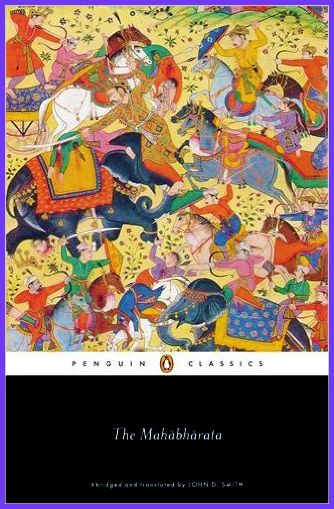
There are also suggestions from other myths that earlier human beings were less individuated, and that our strong ego structure developed at a particular—fairly recent—historical point. The story of Adam and Eve eating from the Tree of Knowledge of Good and Evil suggests this, as also does the notion that they were ‘given understanding’ and that they ‘realised that they were naked; so, they sewed fig leaves together and covered themselves.’ The Chinese myth of the Age of Perfect Virtue suggests that human beings lost their harmony with the Tao as a result of developing a new kind of individuality and self-sufficiency. Individuals began to live by their own will rather than the will of nature. As a result they were much more aware of themselves and their own behaviour. Chuang Tzu tells us that the ‘true man of ancient times did not grow proud in plenty, and did not plan his affairs He could commit an error and not regret it, could meet with success and not make a show’ (in Heinberg, 1989, p. 69). In other words, these ancient men acted without analysing their behaviour, presumably because they were less self-aware, and as a result they were free from feelings of guilt and pride. Similarly, the ancient Indian epic the Mahabharata states that the ‘holy men of old’ were ‘self-subdued and free from envy’ (in Heinberg, 1989, p. 68).
And I am not, of course, the first person to suggest that these myths contain elements of historical truth. Scholars such as Ernst Cassirer (1953–7), L.L. Whyte (1950), Jean Gebser (1966), Julian Jaynes (1976), Joseph Campbell (1964) and Wilber (1981) have all suggested that our strong sense of individuality was not shared by earlier peoples, and emerged at a particular historical time. According to Whyte, this is when the conflict between rational and instinctive behaviour which typifies modern man originated; according to Jaynes, this was when human beings ceased to obey the voices of the gods and started to think and act as individuals; while Campbell shows that at this point the myth of the individual hero pitting his will and strength against fate begins to take precedence over myths based upon the goddess and natural phenomena. According to Cassirer, early human beings lived in a state of ‘cosmic continuity’, in which there was no sharp distinction between the individual and the environment. But later human beings developed a subjectivity, and the duality of subjective-objective and outer-inner.
These authors agree that the transition to a stronger sense of individuality specifically involved the human groups I have mentioned above: the Sumerians, Egyptians, the Indo-Europeans and the Semites (amongst others). However, perhaps due to the lack of archaeological evidence available to them, the dates they suggest for the transition are contradictory. Campbell suggests during the 3rd millennium BCE, while Whyte and Jaynes suggest during the 2nd millennium BCE. The researches of James DeMeo (1998), however, suggest that the Ego Explosion—as it might be termed—occurred much earlier, at around 4000 BCE.
DeMeo’s monumental work Saharasia uncovers evidence of a massive environmental disaster which began at around 4000 BCE: the desertification of the large region of the earth which he calls ‘Saharasia’, which until that time had been fertile and widely populated with humans and animals. Parts of Saharasia – particularly central Asia and the Middle East – were the homelands of these groups, and this environmental change affected them massively. On the one hand, they were forced to leave their homelands (which explains the mass migrations of the Indo-Europeans and Semites over the following centuries), and on the other hand, the new living conditions they were forced to endure apparently transformed their psyche. DeMeo’s research strongly suggests that this was the historical point where war became rife, when societies became socially stratified, when patriarchy began, and when human beings began to experience guilt and shame towards bodily processes and sex.
Read this: Saharasia on Amazon
DeMeo himself interprets this transition in terms of Wilhelm Reich’s concept of ‘armoring’. The pain and suffering which the Saharasian peoples confronted with made them ‘wall themselves off’ from the world and also from their own feelings. They covered over their natural pleasure-seeking impulses with secondary pleasure-denying instincts, and impulses such as the maternal-infant and the male-female bonds, connection to nature, the sexual instinct, trust and openness to other human beings were disrupted.
However, we can also, in a sense, bring DeMeo’s archaeological-geographical findings together with the theories of Cassirer et al. and suggest that the Saharasian environmental change was the cause of the ‘Ego Explosion’. The historical connection is clear —these were exactly the peoples affected by the environmental disaster, and they are the peoples who modern European-Americans are descended from (as well as many other Eurasian peoples who share our sharpened sense of individuality, such as the Semitic peoples and the Chinese and Japanese peoples).
Perhaps the sheer hardship of these human groups’ lives when their environment began to change—when their crops began to fail, when the animals they hunted began to die, when their water supplies began to fail, and so on—encouraged a spirit of selfishness. In order to survive, they had to start thinking in terms of their own needs rather than those of the whole community, and to put the former before the latter. Sharing was no longer an option, since there were not enough resources to support the community as a whole. At the same time perhaps the new difficulties the groups faced as their environment changed brought a need for a new kind of intelligence, a practical and inventive problem-solving capacity. If they wanted to survive they had to deliberate, think ahead, find quick solutions, and to develop new practical and organisational powers. For example, as their lands became more arid they might be forced to come up with new methods of hunting or farming to increase their yields, to find new water supplies or ways of making the ones they already had last longer (such as irrigation). They might have to find ways of protecting themselves against the heat and dust of the desert or against invaders who might to try to steal their supplies after their own had disappeared completely. In other words, the Saharasian peoples were forced to think more, to develop powers of self-reflection, to begin to reason and ‘talk’ to themselves inside their heads. And they could only do this by developing a stronger sense of ‘I’. After all, self-reflection is the ‘I’ inside our heads talking away to itself. If you want to be inventive or to deliberate or plan ahead, you have to have an ‘I’ to think with. In other words, this is perhaps how what Barfield calls ‘Alpha thinking’ developed. And as he notes, this type of thinking inevitably results in a sense of separation from the environment, and an ‘individual, sharpened, spatially determined consciousness’ (in Wilber, 1981, p.28).
The Origins of Theism
And at the same time as apparently giving rise to war, patriarchy and social stratification (for reasons which I do not have space to suggest here) the psychological transformation caused by this environmental change apparently gave rise to theism. Again, the historical link is clear: the groups who migrated away from the Middle Eat and central Asia after desiccation began—the Indo-Europeans, the Semites and others – were the very same groups who developed theistic religions (and who also became war-like, patriarchal and socially stratified). In James DeMeo’s (1998) own terminology, for these peoples matrist ‘natural religions’ (centred around an awareness of animating and spiritual forces) gave way to patrist ‘high God religions’, characterized by dominating male gods separated from nature, who demand obedience and certain forms of moral behaviour.
The question we need to answer is: how did the new strong ego structure apparently bring an end to indigenous spirit-religion, and give rise to theism? How did it bring about the shift from the magical to the religious stages (in Frazer’s terminology), or from the fetichistic to the polytheistic (in Comte’s)?
Perhaps most significantly, this transition entailed a loss of awareness of the presence of spirit-force pervading the world, which can be explained in terms of a redistribution of psychic energy. In his essay ‘Meditation and the Consciousness of Time’ (1996), Philip Novak describes how, in normal states of consciousness, the ego monopolises our psychic energy. He notes that our ordinary consciousness is taken up with ‘endless associational chatter and spasmodic imaginative-emotive elaborations of experience’ (p. 275). Because of this, energy which could be ‘manifested as the delight of the open, receptive and present-centred awareness’ (ibid.) (as it is with indigenous peoples) is, in his words, ‘gobbled’ away. And we can see the Ego Explosion as the point when this state of affairs began. The Saharasian peoples’ more powerful egos required more of each individual’s psychic energy in order to function, and this was only possible by sacrificing energy which had previously been used by other functions. And in this case energy which had been devoted to ‘present-centred awareness’ was sacrificed. That energy was diverted to the ego; as a result, there was less psychic energy to use perceptually, and the individual no longer perceived the phenomenal world with the same intense, vivid vision. As a result their attention became ‘switched off’ to the presence of spirit-force. And if we accept that spirits are objective realities, this was obviously the point when we ‘switched off’ to their presence around us too.
This loss of the awareness of Spirit was itself part of the reason why gods became necessary. Because of their awareness of spirit-force, and their sense of connection to the cosmos, the world seems to be a meaningful and benevolent place to native peoples. As the theologist H. Sindima writes of traditional African religion, ‘Nature and persons are one, woven by creation into one texture or fabric of life, a fabric or web characterised by an interdependence between all creatures. This living fabric of nature—including people and other creatures—is sacred’ (1990, p. 144). Through losing their awareness of spirit-force, the Saharasian peoples seem to have lost this sense of harmony and meaning. Rather than being animate, natural phenomena became soulless objects, and the world became a cold, mechanistic place. In other words, these new strongly ‘egoic’ human beings lost the sense of being ‘at home’ in the world. What Campbell (1964) calls ‘the Great Reversal’ occurred, when the sense of the sacred faded away, the human psyche became riddled with guilt, and the body became associated with sin.
Read this: 5 Books That Are Worth the Struggle to Read
At the same time, perhaps even more important, these peoples began to experience a painful new sense of separateness to the world, and lost the sense of kinship to nature and to other living beings which primal peoples seem to experience. The psychological effects of this were momentous, and partly explain the ‘Great Reversal’ Campbell describes. This is the terrible ‘human condition’ which existentialist philosophers and psychologists often describe so dramatically—for example, when Fromm (1995) writes that ‘[Man’s] awareness of his aloneness and separateness makes his separate, disunited existence an unbearable prison’ (p. 7). This sense of aloneness also brings a sense of incompleteness. Individuals become isolated fragments, broken away from the whole, and as a result have a fundamental sense of unfulfillment (in the literal sense), of not being sufficient as they are, a sense of lack.
In my view, theism was a psychological strategy these human beings used to deal with this new state of being. The belief that gods were always present, watching over them, acted as a defence mechanism against their sense of isolation, and also an attempt to assuage the sense of coldness and indifference they experienced from the world. If the gods were there, they were never alone. If gods were controlling events and protecting them, the world was a more benign place.
Another important ‘compensatory’ factor of theistic religions is the concept of an afterlife. For the most part, native peoples’ views of the afterlife are not particularly special; they certainly don’t envisage death as an ascent to a paradise where the individual ego survives for the rest of eternity, sating itself with endless pleasures and enjoying perfect happiness. For them the afterlife often isn’t very different from this life. The Cheyenne Indians, for example, believe that after death they carry on living in the same way, but as insubstantial spirits, like shadows (Service, 1978). Members of the Lengua tribe of South America told the missionary W.B. Grubb that, ‘The aphangak or departed souls of men in the shade world merely continue their present life, only of course in a disembodied state’ (in Levy-Bruhl, 1965, p.314). And for native peoples life after death doesn’t necessarily mean immortality. As Levy-Bruhl points out, ‘Everywhere primitives believe in survival, but nowhere do they regard it as unending’ (p. 313). The Dyaks of Sarawak, for example, believe that everyone dies between three and seven times, until their souls become absorbed into the air. (Levy-Bruhl, 1965). On the other hand, some native peoples have a purely spiritual conception of the afterlife. Evans-Pritchard (1967) notes of the Nuer, for instance: ‘When a man is dying the life slowly weakens and then it departs from him altogether, and Nuer say it has gone to God [or Spirit] from whom it came Life comes from God [or Spirit] and to him it returns’ (p. 154).
But after the Ego Explosion the afterlife became important as a consolation for the sufferings of life; the psychological suffering which the sharpened sense of ego brings, and the ‘social’ suffering of war, oppression and poverty (much of which was also an indirect consequence of the Ego Explosion). We can assume that the intensified sense of individuality which came with the Ego Explosion brought an intensified fear of death too. After all, if you define your identity purely in terms of your own being, rather than as a part of your community or as a part of the cosmos itself, then the dissolution of your own being is a terrifying prospect. We can therefore see the concept of immortality as a response to this terror of death.
Read this: The Insanity of the Ego in Human History and the Dawning of A New Era
Pascal Boyer (2002) misunderstands the ‘consolatory’ function of religion. He notes the popularity of New Age mysticism, which provides comfort by telling people that they have enormous physical and intellectual powers at their disposal, that the universe is benevolent, that they are connected to all kinds of strange energy forces, and so on. The puzzle here, Boyer believes, is that this ‘religion’ has sprung up in ‘one of the most secure and affluent societies in history’ (p. 24), where there is little war, infant mortality, famine and social oppression. But this isn’t the point, of course. There is a much more fundamental form of suffering which all human beings are exposed to, no matter how rich or secure we are and which we will always require consolation against: the aloneness and separateness of the ego, and the terrible prospect of its dissolution.
Perhaps Gods—and God—had a secondary ‘intellectualist’ function too. Without an awareness of Spirit, Saharasian peoples could not explain the world in terms of the actions of individual spirits. But, of course, anthropomorphic gods took over this role, and became the explanation behind natural events. When the wind rose up, for example, this was not because of the action of ‘wind spirits’ anymore, but because the god of wind was angry; and when a person died of illness this wasn’t because of evil spirits, but because of ‘the will of God’.
There is some evidence that, during later millennia, the strong ego structure which these groups developed intensified even further, leading to an intensification of war, patriarchy and antipathy to sex and the body (DeMeo, 1998). And this may have been partly responsible—together with the historical factors I mentioned above—for the transition from polytheism to monotheism. A stronger ego structure brings a more painful sense of separation, and the monotheistic god became necessary to assuage this, since He, we can presume, offers an even greater sense of protection and a greater sense of thereness than assorted polytheistic deities.
The transition from spirit religion to theism was also signalled by a new division between the sacred and the profane. As Service (1978) notes, in ‘primitive society generally, conceptions of the sacred, or supernatural, so permeate activities that is difficult to separate religious activity from such activities as music and dance or even from play’ (p. 64). Indigenous cultures generally do not have special ‘places of worship’ such as churches or temples, special ‘holy days’ or ‘religious specialists’ like priests. The key to this, of course, is the individual’s awareness of spirit-force. There cannot be a division between the sacred and the profane because the omnipresence of spirit-force – or spirits – makes everything sacred. Every place is potentially ‘holy’ and every individual has access to the divine. But now that awareness of spirit-force was lost, a compartmentalisation of religion took place. The divine became contained within particular places, such as churches and temples, and religious specialists began to act as intermediaries between human beings and gods.
Conclusion
Of course, not everyone conceives of God as a personal being who overlooks the world and controls and intervenes in its events. Christian mystics such as Meister Eckhart and Jakob Böhme used the term ‘God’ to describe spirit-force, or brahman, and encountered a great deal of hostility from the church authorities precisely because this was not the same personal ‘God’ which conventional Christians worshipped. At the same time there are many concepts of God as both personal and spiritual at the same time—i.e. ‘God’ exists as a spirit-force which pervades the universe, but at the same time can manifest himself as a personal being, or at least have powers of agency and influence. The concept of God of the Bhagavad-Gita, for example, is similar to this. Similarly, Keith Ward (2002), suggests that concepts of God or gods arise when human beings try to grasp ultimate reality. We cannot directly perceive the pure spiritual essence of the universe, and so have to ‘image’ forms which represent it. These concepts makes sense when we consider that there is a large grey area between complete ego-separateness and one-ness with the cosmos. At any point along this continuum, there will still a degree of existential trauma and therefore a need for consolation, and a consequent need for a personal god – even whilst there is an awareness of Spirit.
The point I am trying to make, then, is that the concept of God is a psychological strategy which only became necessary when certain human groups developed a strong ego structure. The development of theism was not the result (and the indication) of an evolutionary movement advance towards spirit – as Wilber believes – but the result of an accidental historical event which caused a movement away from it.
In a sense the born-again Christians who tell us that there is a ‘god-shaped hole’ inside us are correct. The ‘hole’ is our fundamental sense of lack and incompleteness, caused by our strong sense of separateness from the cosmos. This is why, to Richard Dawkins’ bemusement, religious beliefs are so persistent, even with so much apparent evidence against them. It’s true, however, that particularly in post-enlightenment Europe, the ‘opium’ of religion has become less readily available. Science has taken over religion’s secondary function of explaining the world, and in the process negated its primary function. As a result many people are forced to find other ways of filling the ‘god-shaped hole’, which might include materialism, power, success, drugs, hedonism, and even supporting soccer clubs.
However, perhaps the best way of dealing with this sense of lack, and the only way which can be truly successful, is not to try to fill it, but to try to remove it—or perhaps more accurately, to transcend it. This is what spiritual traditions such as Vedanta or Buddhism offer us: methods of weakening our ego structure, overcoming our sense of separation and incompleteness, and reconnecting with the cosmos. In a sense they offer us techniques of undoing the negative effects of the Ego Explosion and returning us to the holistic and harmonious experience of the world of native peoples. As Novak (1996) notes, the practice of meditation reverses the ego’s domination of consciousness. The normal structures of consciousness need to be constantly fed with attention. But when we focus our attention upon the present, as we do when we meditate, they are deprived of their attention-food, and begin to weaken and fade away. As a result, says Novak, ‘the mind acquires a new habit of spending less energy on the imaginative elaboration of desire and anxiety and more on perceiving present reality’ (p. 275).
In other words, spiritual or transpersonal development does not help us by giving us a consolation for our ‘terrible’ human condition, but by enabling us to change the state of being—or psyche—which is responsible for our suffering. When we reach a certain level of transpersonal development, the need for consolations such as religion, drugs or materialism naturally falls away, simply because we have transcended the state of ego-isolation which created that need. We discover that our existence is not an ‘unbearable prison’ of separateness and aloneness after all, because the whole universe and everything in it, including our own being, is pervaded with the ‘invisible and subtle essence’ of spirit-force.
Further reading from books referenced in the article:
Sex, Ecology, Spirituality by Ken Wilber
Religion Explained by Pascal Boyer
The Chalice and the Blade: Our History, Our Future by Riane Eisler
The Fall: The Insanity of the Ego in Human History and the Dawning of A New Era by Steve Taylor
Bhagavad-Gita (Penguin Classics)
Saharasia by James DeMeo
A Brief History of Everything by Bain Attwood
References
Atwood, B. (1989). The Making of the Aborigines. Sydney: Allen and Unwin.
Barfield, O. (1957). Saving the Appearances. London: Faber.
Baring, A & Cashford, J. (1991). The Myth of the Goddess: Evolution of an Image. London: Arkana.
Berman, M. (2000). Wandering God: A Study in Nomadic Spirituality. Albany, NY: State University of New York Press.
Boehm, C. (1999). Hierarchy in the Forest. Cambridge, MA: Harvard University Press.
Boyer, P. (2002). Religion Explained. London: Vintage.
Campbell, J. (1964). Occidental Mythology. London: Arkana.
Cashdan, Elizabeth A. (1980). ‘Egalitarianism Among Hunter and Gatherers.’ American Anthropologist, 82: 116–120.
Cassirer, E. (1954–7). The Philosophy of Symbolic Forms. New Haven: Yale University Press.
Cassirer, E. (1970). An Essay on Man. New Haven: Yale University Press.
Cotterell, A. (2000). World Mythology. Bath: Parragon.
DeMeo, J. (1998). Saharasia. The 4000 BCE Origins of Child Abuse, Sex-Repression, Warfare and Social Violence in the deserts of the Old World. Oregon: OBRL.
Eisler, R. (1987). The Chalice and the Blade. London: Thorsons.
Eilser, R. (1995). Sacred Pleasure. Shaftesbury: Element.
Eliade, M. (1967). From Primitives to Zen. London: Collins.
Evans-Pritchard, E.E. (1967). Nuer Religion. London: Oxford University Press.
Frazer. J. (1959). The New Golden Bough. New York: Criterion.
Freud, S. (1938). Totem and Tabu. London: Penguin.
Fromm, E. (1995). The Art of Loving. London: Thorson’s.
Gardiner, H., Mutter, J.D., Kosmitzki, C. (1998) Lives Across Cultures: Cross-Cultural Human Development. Boston: Allyn and Bacon.
Geertz, C. (1973). The Interpretation of Culture. New York: Basic Books.
Gimbutas, M. (1974). The Goddesses and Gods of Old Europe. London: Thames and Hudson.
Griffith, B. (2001). The Gardens of their Dreams. London: Zed Books.
Hamilton, M. B. (1995) The Sociology of Religion. London: Routledge.
Heinberg, R. (1989). Memories and Visions of Paradise. Wellingborough: the Aquarian Press.
Heinberg, R. (1995). The Primitivist Critique of Civilisation. Paper presented at the 24th Annual meeting of the International Society for the Comparative Study of Civilisations, Wright State University, Dayton, Ohio, June 15th, 1995.
Hildebrand, M. von (1988). ‘An Amazonian Tribe’s View of Cosmology’. In P. Bunyard and E. Goldsmith (Eds.) Gaia, the Thesis, the Mechanisms and the Implications. Wadebridge Ecological Centre, Camelford, Cornwall.
Idowu, E.B. (1995). African Traditional Religion. Maryknoll, New York: Orbis Books.
Josephy, Jr., A.M. (1975). The Indian Heritage of America. London: Pelican.
Jung, C.G. (1969). Psychology and Religion: West and East. London: Routledge. (Collected works, vol. 11)
Keck, R. (2000). Sacred Quest: The Evolution and Future of the Human Soul. West Chester, PA: Chrysalis Books.
Lawlor, R. (1991). Voices of the First Day. Awakening in the Aboriginal Dreamtime. Rochester, Vermont: Inner Traditions.
Lenski, J & L. (1978). Human Societies, 2nd. Ed., New York: McGraw-Hill.
Lenski, J. & L. & Nolan, P. (1995), Human Societies, 7th Ed., An Introduction to Macrosociology. New York: McGraw-Hill.
Levy-Bruhl, L. (1965), The Soul of the Primitive. London: Allen and Unwin.
Magesa, L. (1997). African Religion. New York: Orbis.
Markus H. & Kitayama, S. (1991) Culture and the self: Implications for cognition, Emotion and motivations. Psychological Bulletin, 98, 224–253.
Marx, K. (1959). Capital and Other Writings. New York: The Modern Library.
Monro, N.G. (1962). Ainu Creed and Cult. New York: Columbia University Press.
Narada Maha Thera (1997). The Buddha and his Teachings. Singapore: Singapore Buddhist Meditation Centre.
Novak, P. (1996). ‘Buddhist Meditation and the Consciousness of Time.’ The Journal of Consciousness Studies. Vol. 3 No.3. 267–77.
Service, E.R. (1978). Profiles in Ethnology. New York: Harper and Row.
Ravuva, A. 1983. Vaka I Taukei: The Fijian Way of Life. Java: Institute of Pacific Studies, University of South Pacific.
Silberbauer, G.B. (1994). ‘A Sense of Place.’ In Burch, E.S. & Ellanna, L.J. (Eds.), Key Issues in Hunter-Gatherer Research, Oxford: Berg.
Sindima, H. (1990). ‘Community of Life: Ecological Theology in African Perspective,’ in C. Birch et al, eds., Liberating Life: Contemporary Approaches to Ecological Theology. Maryknoll, New York: Orbis Books.
Taylor, S. (2000). ‘From the Unreal to the Real: The Reality of Higher States of Consciousness’. New Renaissance, Vol. 10, No.1
Taylor, S. (2002). ‘Where Did it All Go Wrong? James DeMeo’s Saharasia Thesis and The Origins of War’. The Journal of Consciousness Studies. Vol. 9 no. 8. 73–82.
Taylor, S. (2003). ‘Primal Spirituality and the Onto/Phylo Fallacy: A Critique of the Claim that Primal Peoples were/are less Spiritually and Socially Developed than Modern Humans.’ The International Journal of Transpersonal Studies. Vol. 22. 61–76.
Taylor, S. (2005). The Fall: The Evidence for a Golden Age, 6000 Years of Insanity and the Dawning of a New Era. Southampton: O Books.
Ward, K. (2002). God: A Guide for the Perplexed. Oxford: One World.
Werner, H. (1957). The Comparative Psychology of Mental Development. New York: International Universities Press.
Wilber, K. (1981). Up From Eden. Wheaton: Quest Books.
Wilber, K. (1995). Sex, Ecology, Spirituality. Boston: Shambhala.
Wilber, K. (1996). A Brief History of Everything. Boston: Shambhala.
Wilber, K. (2000). One Taste. Boston: Shambhala.
Wright, R. (1992). Stolen Continents. Boston Houghton Mifflin.
- When I speak of Native Americans as native peoples here I am excluding peoples like the Incas, Aztecs and Maya, who had many of the characteristics of European culture – a high level of technology and social organisation, a high level of warfare, of social inequality etc. Unsurprisingly, their religions were more similar to European polytheistic religions than to primal spirit religion, although they do seem to have included some elements of the latter. For example, Service (1978) notes that ‘unlike most primitive peoples, the Inca addressed prayers to divinities and made offerings’ (p. 345). But at the same time the Inca believed that the world was pervaded with dachakamag – their term for spirit-force. This suggests that, in terms of the argument of this essay, these peoples also underwent a kind of Ego Explosion, which meant that they developed a stronger ego structure than other Native American peoples (although, judging by these elements of spirit religion, perhaps not as strong as Eurasian peoples). ↩
- Some authors have warned against seeing contemporary tribal groups as representatives of prehistoric human beings (e.g. Roszak, 1992). However, at the time European peoples first had contact with them, these were cultures which had apparently been unchanged for thousands of years. In any case, what anthropologists’ reports of these cultures correspond very closely to what we know of prehistoric human beings – e.g. their animistic worldview, their tribal system, and the hunter-gatherer lifestyle. As Lenski (1978) wrote, ‘Comparisons [between anthropology and archaeology] are not only valid but extremely valuable The similarities are many and basic; the differences are fewer and much less important’ (p. 137).References ↩

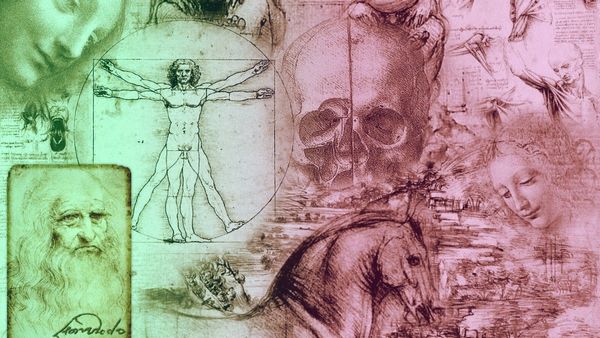
![Seneca’s Groundless Fears: 11 Stoic Principles for Overcoming Panic [Video]](/content/images/size/w600/wp-content/uploads/2020/04/seneca.png)


